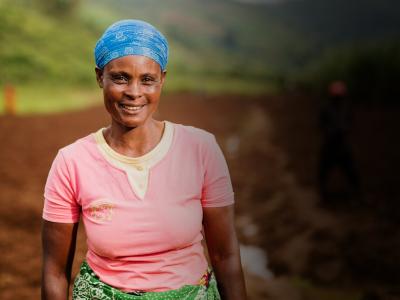Welcome to the Women for Women International Book Club!
We’re excited to announce that #WFWIBookClub is launching a space for readers passionate about women’s power to connect on Facebook Groups! We hope you’ll join us soon to help build a community of sharing women’s stories and our strength with one another.
Join the #WFWIBookClub Facebook Group
We’re kicking off the group by reading Daughters of Smoke and Fire by Ava Homa—the first novel written and published in English by a female Kurdish writer.
Homa’s debut novel follows a Kurdish family living in Iran. Often considered a stateless nation, Kurdish people have endured oppression and even genocide from various states. Through her portrait of a family, Homa shows the toll of violence and the violation of rights takes on a community and individual level, and especially the burden for women.
What is Daughters of Smoke and Fire about?
After Leila’s family fled the brutality in Halabja just years before the chemical attacks, their life in Iran still proves difficult under the oppression Kurdish people face. Their family is strained by her parents’ difficult marriage, heavy with mental illness, poverty, and trauma from being imprisoned and tortured. Many of their neighbors, friends, and fellow community members are or know someone murdered or imprisoned.
Leila dreams of making films but her goals elude her as poverty keeps academic resources out of reach. Her brother, Chia, follows his father’s activist footsteps, longing to be a lawyer that can fight for the rights of their people. Their bonds deepen when the weight of history, failure, isolation, and gender expectations push Leila to the edge.
When her brother fails to return home from a demonstration, Leila seeks answers and pursues justice. She finds strength in fellow women, who help her find her own. As she shares Chia’s writings—inspired by the real-life Kurdish teacher, poet, and activist Farzad Kamangar—Leila finds the courage to seek her own path and share the stories she dreamed of telling to show Kurdish people to the world.
Discussion Questions
Check out the discussion questions below and connect with readers on Instagram or on Facebook Groups to share your reactions, thoughts and questions by using the hashtag #WFWIBookClub, and tagging us with @womenforwomen. We want to hear what you think—share with us your take on the book!
-
Homa has talked about being a Kurdish woman as being a “minority within a minority.” Reading Daughters of Smoke and Fire, how do you see that manifest through Leila and the other women characters?
-
Daughters of Smoke and Fire features several different women characters, especially Leila, Hana, Shiler, and Joanna. How did the story show their differences? How did they approach and react to their womanhood?
-
In both the Kurdish community and the other parts of Iran, what were some of the expectations of women? How ere these forced or enforced formally and informally? How are women penalized for not meeting expectations—even when they are already victimized?
-
The violent oppression against Kurds is a large part of the book. One of the ways it’s conveyed is through Alan’s body and memories. How did his trauma affect his relationship with his family? What did it mean for his children? And what does this say about the impact that conflict has on a generational and community level?
-
What role did colonialism and imperialism play in the current status of Kurdish people?
-
Besides physical violence, what are some of the other ways Kurdish culture is repressed? How does that make their safety more precarious?
-
Leila is described as more conservative with her sexuality than some of the other women characters. How is that demonstrated and how does it affect her perspective and relationship with other women characters? In what ways is her repression survival? And in what ways is it harmful to herself?
-
From an early age, Leila sees Chia treated differently than her. How did their treatment differ and how does that affect Leila’s opportunities and view of herself?
-
The prologue of the book begins with a scene in the middle of the story, of Leila’s attempted suicide. What pushed her to these actions? How does it relate to or contextualize the suicide of one of Chia’s students?
-
One of Chia’s projects, “From Self-Reign to Self-Immolation: The Paradoxes in Kurdish Women’s Lives,” would have explored the contradictions of Kurdish women’s status in their culture. What were some of the contradictions?
-
More than one woman in the story joins the Peshmerga, the military forces of the Kurdistan Region of Iraq. What did this say about women’s role in society and their choices? What was the price of joining? What was gained?
-
Throughout the novel, many characters seek to be heard and tell their story. What are the barriers to sharing one’s stories? What are the benefits? What different ways did people find to express themselves and own their stories? Why was it important to Leila to tell stories?

